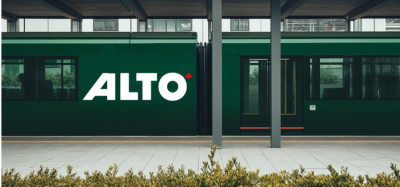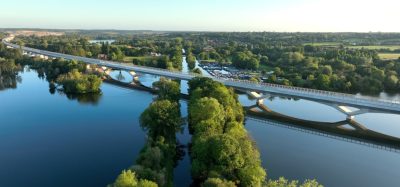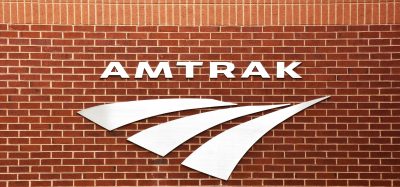The ambition to operate 250km/h trains on existing infrastructure
Posted: 22 September 2011 | | No comments yet
When the tilting train X2000 was introduced 21 years ago, it dramatically changed the way of travel in Sweden. Travelling by rail took substantial market shares from airlines and road traffic. The key success factors were higher speed (200km/h on existing infrastructure), point-to-point travel, significantly reduced travel time, better comfort and a higher service level with a focus on the business traveller. Travelling with the X2000 became associated with a high ‘coolness’ factor and a certain status.
Market situation
The total market for rail traffic in Sweden and Scandinavia continues to increase whilst it is also moving into a new competitive context due to deregulation. Since October 2010, there is full open access for any operator to the Swedish market.
Now SJ’s ambition is to respond to market demands and future competition to find a successor to the X2000. A new high-speed train capable of travelling at 250km/h on existing tracks is needed. SJ’s vision is that the new trains should change the way of travelling in the same way that made the X2000 concept so successful when it was introduced in the 1990s.
When the tilting train X2000 was introduced 21 years ago, it dramatically changed the way of travel in Sweden. Travelling by rail took substantial market shares from airlines and road traffic. The key success factors were higher speed (200km/h on existing infrastructure), point-to-point travel, significantly reduced travel time, better comfort and a higher service level with a focus on the business traveller. Travelling with the X2000 became associated with a high ‘coolness’ factor and a certain status. Market situation The total market for rail traffic in Sweden and Scandinavia continues to increase whilst it is also moving into a new competitive context due to deregulation. Since October 2010, there is full open access for any operator to the Swedish market. Now SJ’s ambition is to respond to market demands and future competition to find a successor to the X2000. A new high-speed train capable of travelling at 250km/h on existing tracks is needed. SJ’s vision is that the new trains should change the way of travelling in the same way that made the X2000 concept so successful when it was introduced in the 1990s.
When the tilting train X2000 was introduced 21 years ago, it dramatically changed the way of travel in Sweden. Travelling by rail took substantial market shares from airlines and road traffic. The key success factors were higher speed (200km/h on existing infrastructure), point-to-point travel, significantly reduced travel time, better comfort and a higher service level with a focus on the business traveller. Travelling with the X2000 became associated with a high ‘coolness’ factor and a certain status.
Market situation
The total market for rail traffic in Sweden and Scandinavia continues to increase whilst it is also moving into a new competitive context due to deregulation. Since October 2010, there is full open access for any operator to the Swedish market.
Now SJ’s ambition is to respond to market demands and future competition to find a successor to the X2000. A new high-speed train capable of travelling at 250km/h on existing tracks is needed. SJ’s vision is that the new trains should change the way of travelling in the same way that made the X2000 concept so successful when it was introduced in the 1990s.
When investigating the prospect for a new train, SJ’s starting requirement was for standard rolling stock made for 250km/h with tilting capability for existing infrastructure in Sweden, as well as Denmark, Germany and Norway.
SJ AB – fact sheet
SJ AB was founded in 2001 and is now one of Sweden’s best known brands and is perceived by many as the whole nation’s rail operator. SJ is a limited liability company owned by the Swedish state. Separation of operations into infrastructure (Trafikverket) and passenger traffic (SJ) was seen in 1988. SJ’s objective is to be a modern, profitable, customer-oriented and sustainable travel company. Our aim is to continue to be Sweden’s leading train operator and our customers’ first choice. SJ has 4,500 employees with sales of approximately SEK 9 billion in 2010. SJ has ensured a 10% return on government equity year-on-year and similar double digit figures on return on capital employed.
SJ’s growth strategy is to fill up the trains, to focus on new markets, and to offer new products. Our objective is to meet the customers’ expectations, increase competitive positioning and increase profitability. SJ offer both travel services under our own brand as well as contract rail services for regional transport authorities.
SJ has a 55% share of the total Swedish passenger rail market and operates 90% of rail passenger services in Sweden exceeding 100km.
SJ situation
During the last two years Sweden has experienced severe winter conditions with reliability problems in terms of both rolling stock and infrastructure. Customers are becoming increasingly well informed, cost and quality conscious. This results in higher demands on function and availability.
SJ is responding to the challenges facing full-fledged deregulation by improved quality of service to increase customer satisfaction, improved productivity to reduce cost, expan – sion into new markets – cross border expansion initiatives (i.e. increased traffic to Denmark during 2011), delivery of a new fleet of rolling stock (SJ3000) for medium travelling distances and an upgrading of existing rolling stock, with focus on the X2000.
Why 250km/h on existing tracks?
Sweden has more than 10,000 km of railway track. The present Swedish railway network and its main lines were planned and began to be built in the middle of the 19th century. Large parts of the 20th century saw a very substantial concentration of population, especially in the metropolitan areas. The growth of the metropolitan cities in combination with better communications has led to the expansion of the market for commuting by rail, making it possible for people to settle further and further from their workplaces. This has, in turn, led to more traffic and new traffic systems. The present metropolitan areas are expected to account for 80% of population growth up until 2030.
The development with rail taking a continuously growing market share for business travelling is expected to continue. Global warming is of course one of the factors. The train is in general an energy efficient way of travelling. It is further improved by the fact that all of SJ’s trains are powered by electricity purchased from renewable sources, primarily hydro power.
To meet the future demand for transport and the challenges facing society, we are standing at a crossroad where more investment in infrastructure, and not least in railways, in Sweden is a very important factor. We have to meet tomorrow’s needs for transport in terms of cost-efficiency, capacity and development.
Creating shorter travel times will expand labour market regions, thus creating conditions for growth and development. This can be achieved through either increasing the speed on the existing infrastructure or building new infrastructure – high-speed railways.
A government commission proposal from 2009 was to build separate high-speed railways for passenger traffic between Stockholm and Malmö and between Stockholm and Gothenburg. The government and the parliament have not yet decided in favour of the financing and the construction of highspeed railways.
However, SJ needs to respond to market demands and the new competitive environ – ment and the need for upgrading its rolling stock and cannot wait until 2025 for new high-speed tracks.
Potential investment in new high-speed trains
A new high-speed train must be perceived as a premium product that will improve the general image of SJ in the direction of higher reliability and quality of service. The focus is on business travellers, leisure travellers and commuters, but it should also be aligned with SJ’s vision – ‘All Aboard’.
Our strategic foundation is that there must be a trip for every need and every wallet. SJ’s vision captures the breadth and quality we want to be associated with. The vision also signals thoughtfulness and the desire to take care of our customers when they choose SJ for safe, reliable and comfortable rail travel.
SJ’s business concept is to offer efficient and environmentally friendly travel. SJ’s core values are Innovation, Thoughtfulness and Responsibility.
In order to attract and retain our customers, all of SJ’s work has a strong focus on customer needs and expectations. In general, our customers want:
- Short and attractive travel times
- High frequency of service and point-topoint trains
- Reliable and dependable trains
- Low fares
- Good service and comfort
- The onboard experience – sometimes more important than the actual trip.
SJ must therefore offer an efficient and comfortable journey, through:
- High comfort, high service, and good image
- Attractive travel time (vehicle speed, acceleration characteristics)
- Designed for short station stops and strong performance to make up for delays.
The vision is that a new rolling stock must enable SJ to run an efficient and flexible operation with a high degree of utilisation. High reliability and availability with a minimum amount of failures/delays and cancelled trains based on high maintainability. The trains must be flexible and capable of being adapted to future requirements and changes. It should be possible to modernise the vehicle fleet for the future through technical upgrades. The trains should be capable of operating services up to at least 2040.
Key requirements
SJ is expecting new trains to meet both SJ’s functional and technical requirements and the following factors are of main priority:
- Proven solutions on a standard train platform with minimum changes – well functioning process to integrate proven subsystems/solutions. Preferably produced in large series and to other operators
- Long-distance travel point-to-point, from 2 hours to 5 hours with very high standards of comfort, service and competitive travel times. Travelling time between Stockholm and Gothenburg shall be equal to or better than today’s X2000 travel times
- The train must be design tested and proven for the Nordic winter climate conditions (–40°C)
- Fulfil the high-speed directives (e.g. HS RST TSI)
- Low Life Cycle Cost (LCC) and cost efficiency throughout its life time
- Adapted to modern environmental requirements with excellent working environment for both on-board personnel (including drivers) and main – tenance personnel.
How to achieve high performance that results in short travelling times on existing infrastructure?
To be able to achieve higher performance on existing infrastructure, the train should be equipped with a system that enables highspeeds in curves but still with an attractive ride comfort on existing tracks. The bogie design has to be made to provide authorised track forces. The maximum speed should be 249km/h (Class 2 according to HS RST TSI ) with first-class acceleration and deceleration as well as optimal position of doors – to enable swift station stops.
There are still limits to achieve higher speeds than 200km/h on existing infrastructure in Sweden. The maximum speed is 200km/h – except 250km/h for the new Botniabanan. There are technical barriers to 250km/h on the existing rail network that need to be addressed from the infrastructure owner. ERTMS can provide opportunities for higher speed after 2017. SJ is working with the infrastructure owner, Trafikverket, on how to plan for improvement of the infrastructure on selected parts of the track.
International market focus
With SJ’s cross-border focus, the new train should be homologated for operation in Sweden, Denmark, Germany and Norway, with a vehicle profile for the countries of operation (G1- profile). It should therefore also be equipped with dual power supply system (15kV, 16 2/3 Hz and 25kV, 50Hz). Of course, appropriate signalling systems for the countries of operation, including ERTMS Level 2, has to be installed.
The characteristics of the train
The train should have two vehicles for 1st class and four vehicles for 2nd class. It should provide a high service concept level, yet provide high seating capacity. An attractive external and internal design for customers, personnel and public is considered of great importance. The train should also provide good comfort with state-of-the-art chairs and lighting, and a very good acoustic and dynamic behaviour in a restful environment on board. It should also provide a state-of-the-art on-board infotainment system.
Continual focus
Travelling by rail must continue to gain market shares from the airline and road traffic in Sweden. SJ will continue to focus and improve on the key success factors of the X2000 and take the initiative to focus on the railway of the future.
About the Author
Before joining SJ AB in 2009, Björn Westerberg was a partner at a technology strategy advisory firm for six years. He has been an advisor to infrastructure companies, government agencies, and financial institutions on strategy, technology, and financing. Björn holds a business degree from the Stockholm School of Economics and a M.Sc. in Management, Sloan Fellow, from Stanford Graduate School of Business, Stanford University.
OUT NOW: The Definitive Guide to Rail’s Digital Future
The rail industry is undergoing a digital revolution, and you need to be ready. We have released our latest market report, “Track Insight: Digitalisation.”
This is not just another report; it’s your comprehensive guide to understanding and leveraging the profound technological shifts reshaping our industry. We move beyond the buzzwords to show you the tangible realities of AI, IoT, and advanced data analytics in rail.
Discover how to:
- Optimise operations and maintenance with real-time insights.
- Enhance passenger services through seamless, high-speed connectivity.
- Leverage technologies like LEO satellites to improve safety and efficiency.
Featuring expert analysis from leaders at Nomad Digital, Lucchini RS, Bentley Systems and more, this is a must-read for any rail professional.







